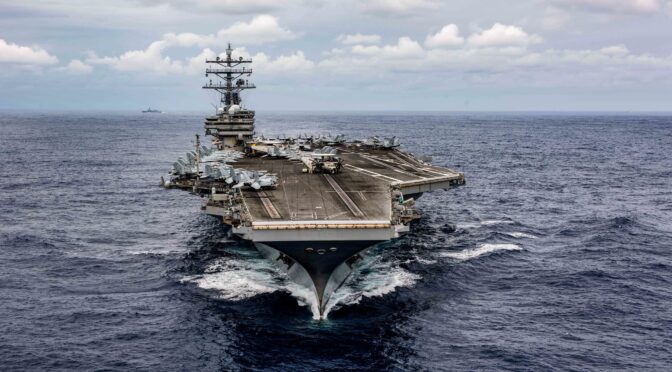“Like war itself, our approach to warfighting must evolve. If we cease to refine, expand, and improve our profession, we risk becoming outdated, stagnant, and defeated.” –Commandant General A. M. Gray, USMC, MCDP-1, Warfighting
By CDR Paul Nickell
Perpetual administrative burdens, general military training, perfecting PowerPoints and quad charts, cataloged trackers for trackers, and continuous connectivity to every servicemember erodes the quality of the military’s preparation and conduct of warfighting. Few practical steps exist below the four-star level that can offer substantial relief from these numerous demands, but warfighters must still strive to exercise deliberate management and find ways to put warfighting first.
Despite being immersed within myriad administrative milieu, warfighting is our purpose. Denying this is to deny the immutable warrior ethos shared by every generation. While leaders have openly stated that warfighting is the top priority, this imperative has not been effectively translated into the deckplate reality of the warfighter’s workload. Their focus is thinly spread across many tasks, many of which are only indirectly connected to warfighting. Deliberate management is the means of leadership to address this challenge. Characterized by intentionality and firm commitment, the deliberate management of warfighting acknowledges that putting warfighting first is a constitutional aspect of service. Deliberate management therefore embraces the related leadership challenges of preserving the warfighting focus amidst the tide of lesser requirements.
Marine Corps Doctrinal Publication (MCDP) 1, Warfighting, offers practical steps to emphasize warfighting preparation that each servicemember can implement now. Some of these steps pertain to focus areas that include doctrine, professionalism, training, professional military education, equipping, and personnel management.
Doctrine contains the foundational beliefs and values of warfare communities on how they expect to operate and fight. Leadership must urge warfighters to learn doctrine, engage in discussions on it, and question its tenets. Professionalism compels these intellectual behaviors from practitioners of war. A cornerstone of effective military leadership is fostering a continuous learning culture with a growth mindset that necessitates coaching, mentorship, and counseling to attain competitive warfighting skill.
Training, distinct from readiness, propels us to take to the field, to steam underway at sea, to take flight, and to frequent simulators. Training encourages units to seek more opportunities for disciplined repetition and failure to garner invaluable experience, and to learn warfighting by actively practicing it.
The benefits of Professional Military Education (PME) encourages leaders to seize every educational opportunity to send personnel to schools, in-person or virtually. PME serves as the mechanism to foster a common language of warfighting through the study of service doctrines, wargame lessons, historical combat operations, and adversary literature. PME offers opportunities to study warfighting at broader levels that go beyond that of the tactical unit, such as fleet-level warfare and the operational level of war. PME affords warfighters some of the most expansive opportunities to deepen their warfighting expertise, where they can focus on their education without being encumbered by the numerous administrative and maintenance burdens that can dilute warfighting focus on the deckplate or at the squadron.
Equipping necessitates an investment in the right tools, but not just hardware for warfighting capability. It also means intellectually equipping warfighters for learning, including carefully curated unit professional libraries, warfighting journal subscriptions, and structured discussion time that incentivizes servicemembers to engage with one another on warfighting content.
Personnel management stands as the capstone of warfighting prioritization. Managing for warfighting is fundamentally about people, and cultivating their expertise and professional development as warfighters. Empower every servicemember with concrete imperatives to deepen their warfighting focus, within the allowable authorities and responsibilities, and then trust them to carry out those duties with unwavering accountability.
These six focus areas, when interwoven, develop the competitive warfighter. Ultimately, the prioritization of warfighting depends on prioritizing the servicemember. Operational plans, technology, and service capabilities are meaningless if leaders are unable or unwilling to invest in the training and education of their people. In a time of great power competition and rising global strife, a failure to prioritize warfighting first is irresponsible and a failure to those we lead.
Commander Paul Nickell is a PMBA student at the Naval Postgraduate School and a Senior Course student at the Naval War College. He is part of the naval aviation community having commanded a P-8A squadron, and facilitated learning at the Navy’s Leadership and Ethics Command for future Major Commanders, Commanding Officers, Executive Officers, and Command Master Chiefs. His academic focus has been on organizational learning, vertical development, and executive coaching as foundational aspects for learning organizations.
Featured Image: Philippine Sea (Oct. 4, 2023) The U.S. Navy’s only forward-deployed aircraft carrier, USS Ronald Reagan (CVN 76), steams in the Philippine Sea. (U.S. Navy photo by Mass Communication Specialist 2nd Class Caroline H. Lui)

